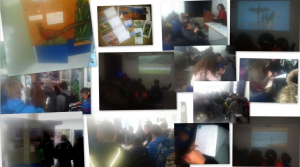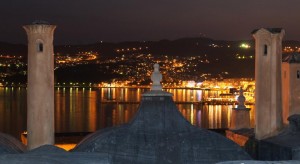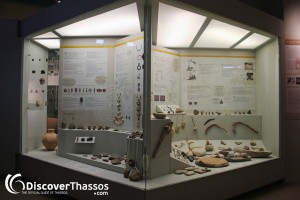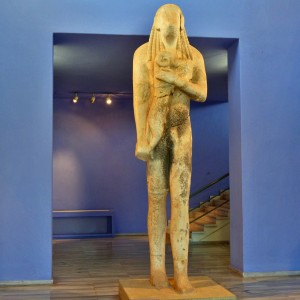OUR VISIT TO NESTOS INFORMATION CENTER IN KERAMOTI
Environment plays a vital role for people’s life and it is a crucial factor which influences the culture of an area. At the borders of the municipalities of Kavala and Xanthi there is a part of the river Nestos. In Keramoti there is the Nestos Information Center. We decided to visit it on a snowy day of January in order to be informed about the life-animals and plants- in Nestos. The twenty one students-members of the cultural programme “Learning by travelling” really enjoyed our visit there as it is obvious in the following video.
- 1. NESTOS RIVER
The National Park of East Macedonia-Thrace includes the protected areas of wetlands of the Nestos Delta, Vistonida and Ismarida. The Nestos is one of the biggest rivers in Greece. Its total length is 243 km, of which 130 km are on Greek ground. It springs from Rila mountain in Bulgaria and flows into the Thracian Sea. The banks of the river are covered mainly by deciduous trees that extend from Bulgaria to Greece. The Delta is a wetland of international importance and part of the National Park. It is protected by the Ramsar Convention, which was agreed on February 2nd, 1971.
Τourists of the Nestos can admire its awesome flora and fauna. They are astonished by the natural environment with rare, beautiful wildflowers, glossy ibis and orchids. 300 species of birds, 30 species of predators, 11 species of amphibians, 21 species of reptiles and several are the types of fish that live in the lagoons of the Delta.
In this area there is also the forest called Kotza Orman. Some decades ago the forest used to cover about 125,000 acres while today it covers only 4,600 acres. Nature lovers can walk along the river on the European path E6. They can also go bird watching during the whole year. Moreover, visitors can cross the river with canoes.
In Keramoti opposite the Junior High School there is the Information Center of the Nestos Delta.
The main purposes of the Information Centre are:
- the conservation of natural resources,
- the restoration and maintenance of ecological balance,
- the information and awareness of citizens,
- the local development of human activities,
- the environmental education,
- the development of ecotourism,
- the social, economic and cultural development of the region.
Source: Wikipedia
Thanasis , class B1
2. IMARET
Imaret is a jewel for the city of Kavala. It dominates at the peninsula of Panagia. This rare example of large institutions of the last Ottoman period has survived almost intact. In recent years restoration work and alterations have been made and now it serves as a hotel.
Imaret was built between 1817-1821 but took its final shape in the 19th century. It was constructed thanks to Mehmet Ali (1805-1848), who wanted to benefit his hometown with a religious, educational and charity foundation.
The «mektemp» was the basic education school for boys. There they learned quotations from the Koran, writing, reading and arithmetic. At Imaret, which means the «kitchen with soup», students and the poor people could taste free food no matter which their religion was. They could have some soup or rice with folda, meat soup once or twice a week, while on Fridays and holidays they had zerde, which was rice with honey colored with saffron. However, from the mid-19th century Imaret began to be questioned about its usefulness and its abolition was asked.
During crisis in Greek-Turkish relations (1821-1830: period of Greek Revolution) there were weapons in the warehouses of Imaret. The free supply of food continued after the annexation of the region to the Greek state but it stopped in 1923, when Imaret had to accommodate refugees. Imaret had already existed for a century and stopped to exist in June 1924.
In 1931, a part of Imaret was demolished; the rooms of the second ‘medrese’, part of ‘mektemp’ and the main entrance of Imaret. This was because Zalongou street was widened.
Since late 1922, Imaret was used for housing refugees. Several poor families remained there for decades, paying a small rent to the representative of Egypt. In 1967 the withdrawal of the occupants was ordered and the monument was sealed. According to the 1984 Hellenic-Egyptian agreement, Imaret and «the house of Mehmet Ali» were recognized as Egyptian properties. Both countries agreed to cooperate in its conservation and maintenance. Until a few years ago a part of Imaret was a bar and restaurant while another part accommodated warehouses of neighboring shops.
In 2001 Anna Misirian, a businesswoman from Kavala rented the monument for fifty years. It was restored and converted into a luxurious and elegant hotel that retains something of the atmosphere of his era. The most attractive elements of Imaret are the three internal courtyards and the arcades with repetitive arches.
Undoubtedly, Imaret carries a long history. It is known worldwide and attracts tourists who want to admire this artwork.
Source: http://kavalareghistory.weebly.com/iotamualpharho941tau.html
Evdokia, class B1
3. THE ARCHAEOLOGICAL MUSEUM OF THASOS
The Archaeological Museum of Limenas in Thasos was built in 1934. It has been expanded recently. In 2004 the museum reopened its doors to the public after many years of inactivity. The visitor can see exhibits from prehistory to the late Iron Age. The first room is dedicated to Marina Sgouros. In this room there are photographs from the excavation in Thasos. During the period 1911-1981, French archaeologists discovered the ancient city and excavated it.
Moreover, the visitor can find much information about the settlement of Thasos from prehistory to the most recent years. The first settlements date back to the Bronze Age (3500-1500 BC). The pottery of the Iron Age is presented through handmade vases. There are also interesting rock paintings and illustrations in cave walls. The anthropomorphic columns represent some of the oldest sculptures of prehistoric Europe. Most of them were found in Skala Sotiros. Perhaps they symbolized deities or heroes. In another room there are findings about fishing, agriculture, and livestock, activities that people from the island dealt with.
One can be impressed by the large cemeteries of the later period of the Bronze and Early Iron Ages. These have been found in the wider area of Theologos. There are also information about the burial customs. Last but not least, a tourist is really impressed by the kouros of the Archaic period, which represents a young, naked man holding a ram (600 BC). It is 3.5 meters and it was found in Pithio.
The museum is open to the public from 8.30-15.00 every day. The ticket costs only two euros. It is worth visiting it!
http://www.imma.edu.gr/macher/museums/show.html?museum_id=37
Paul, class B1






 Time in Salonica
Time in Salonica 